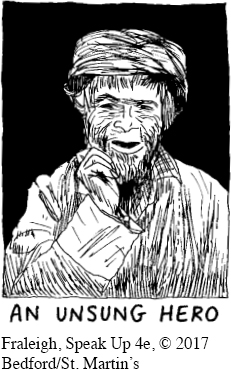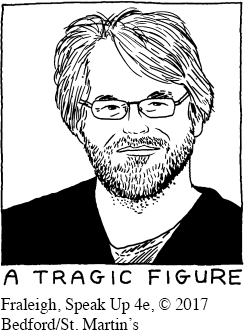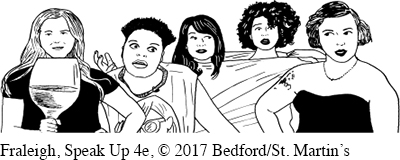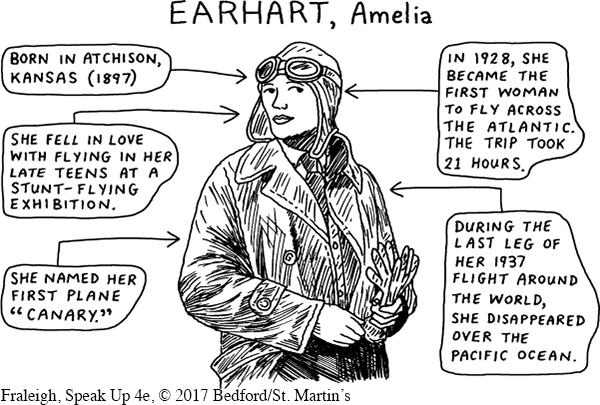Individuals or Groups
479
Giving an informative speech about an individual or a group offers an equally wide range of possibilities. People are fascinated by others, as can be seen from the popularity of celebrity-
A famous politician, entertainer, sports star, explorer, or artist. For example, you might give a speech about Shirley Chisholm, the first African American woman elected to the U.S. Congress (in 1968) and a candidate for president in the 1972 Democratic primary, nearly four decades before Barack Obama or Hillary Clinton.

An unsung hero (a person or group that did something great but never won recognition for the accomplishment). For instance, you could tell your audience about members of a small tribe in the forests of Burma who survived persecution by the ruling junta.

A tragic figure whose life provides a cautionary tale. For example, you might discuss Philip Seymour Hoffman’s untimely death from mixed drug intoxication after starring in many critically acclaimed films.

480
An influential political party, artistic movement, sports team, or musical group. For instance, you might discuss the rise of women in comedy—
both those writing and starring in their own television shows, such as Lena Dunham, Amy Schumer, Ilana Glazer, and Abbi Jacobson, as well as those who have helped to diversify existing shows, such as Leslie Jones of Saturday Night Live. 
As with objects, you could easily use description to deliver your informative speech about an individual or a group. For example, if your speech focused on aviator Amelia Earhart, you could describe her youth and personal qualities along with her famed accomplishments. You also might use narrative to tell a story about the defining experience that led her to become a pilot (namely, attending a stunt-

481
Remember that although you will not be able to describe all of a person’s life experiences in a single speech, you can use life events to make a larger point about a person’s character—
A presentation on a person or group might effectively incorporate information about an object or a process as well. Consider a talk on renowned inventor Thomas Edison. To convey Edison’s innovative spirit, you could discuss the life experiences that led to his great achievements and also several of his most famous inventions—